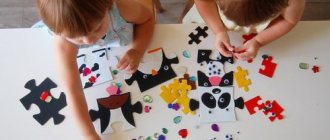Concept of perception
In the previous lecture, we looked at the process of reflecting individual properties and qualities of the external and internal world, which is called sensation.
However, man does not live in a world of isolated qualities, spots of light or color, sounds or touches. He lives in the world of things, objects, forms, in the world of complex situations and deals not with individual sensations, but with whole images. Sensations and perceptions are a sensory reflection of reality with its direct impact on the senses. However, we define these processes as opposite: if the sensation is a reflection of the individual properties of objects in the material world. as well as internal states of the body, then perception is a reflection of phenomena as a whole with their direct impact on the senses.
Perception is not the sum of sensations. It requires isolating the main, leading features from the complex of influencing features while simultaneously abstracting from the unimportant ones. Perception is the result of complex analytical and synthetic work. distinguishing some features from others, combining perceived details into one meaningful whole. Thus, perception is closely related to thinking.
The process of perception also requires a comparison of the image of an object with previous gaps about it. If in the process of such comparison the hypothesis about the alleged object coincides with the incoming information, then recognition of the object occurs, and the process of perception is completed. For example, if I now show you a familiar object, you will instantly recognize it and name it. The image of this object is already stored in your memory; you have seen it many times. However, if an unfamiliar object (for example, some exotic fruit or an unfamiliar device) comes into your field of perception, then you will examine it and make hypotheses about what it really is.
According to L.N. Leontiev, the psychology of perception is scientific knowledge about that. how in life we build an image of the world and how it functions in life. The function of the image is the self-reflection of the world. This is a function of nature’s “intervention” in itself through the activities of subjects. The image of the world, enriching and changing throughout the subject’s life, plays a crucial role in the regulation of his life activity.
Apperception
What is apperception in psychology? The term apperception was introduced into science by the researcher G. Leibniz.
He was the first to prove that perception is simply the perception of reality, and apperception is already conscious .
If we return to what has already been said, we can add that apperception is the highest level of perception, the maximum degree of which belongs to man.
The founder of experimental psychology W. Wund , based on this, proved that the main participation in this process is attention, as part of consciousness.
If attention is not focused on a particular object, awareness of it does not occur . But once the concentration of attention occurs, the process of apperception begins, which is the basis of conscious thinking.
According to Wund's theory of apperception, it was the ability to such perception that made a person human.
Perception inevitably depends on previous experience . Let's say that we generally consider many objects briefly, in passing, because we encounter them every day.
For example, in the morning we will not closely examine the kitchen table at which we have breakfast, or the scrambled eggs that are served for breakfast.
But if we try, say, an avocado for the first time, we will perceive this item differently .
Apperception refers to the dependence of perception on a person’s previous experience.
Moreover, this dependence can be expressed in completely different ways in relation to the same subject .
A child , seeing a circle, will only perceive it as a circle. A student will inevitably remember his geometry lessons. A motorist will immediately think of a wheel, and a circus lover will immediately think of a ring.
Professional skills are of great importance in the perception of the environment.
Let's say, a landscape designer, appearing in an unfamiliar garden or park, will immediately determine the components of this design, a gardener will note the well-groomed nature of the site and the moisture of the soil, and a child will look for places where they can play or hide.
Apperception is largely determined by a person's age and knowledge .
With age, the senses, which are the basis of perception, change, and not always in the direction of development. Hearing , for example, often gets worse with old age. But the child is born with good hearing.
Another thing is vision . It develops throughout a person’s life:
- infants have poor eye movement control and have black-and-white vision;
- at 2 months they consciously perceive depth and distance;
- visual acuity during this period in children is already adequate to these indicators in adults;
- at 3 months they acquire color vision;
Gradually, the child develops perceptual abilities - means that form an idea of the world around him, when its individual manifestations affect the human senses.
The following qualities can be considered the main indicators of such abilities at different stages of a child’s development:
- volume of perception, it is measured by a certain number of objects that the subject can perceive, say, within one minute;
- accuracy of perception, which means the correspondence between the image of an object formed in the mind and the object itself in reality;
- completeness is the degree of such correspondence;
- speed of perception, here the time of final formation of the image of an object in the mind is determined;
- emotional reaction to the subject being studied.
To develop these abilities, perceptual modeling - a technique with which in kindergarten children are taught to perceive objects as components of a certain unified whole.
For example, a child is offered an image of a circle on one of the notebook pages.
And on the other there are many disparate elements, from which it is necessary to select the constituent parts of the shown circle or other geometric figure.
If such exercises are performed regularly, gradually complicating the tasks, the student’s overall development (and not just perception) will happen much faster .
As the child grows up, a transcendental unity of apperception . This term appeared in Kant's philosophy.
According to the scientist, this is the unity of self-consciousness, which produces the idea “I think . It does not belong to the sensuality of the organism and constitutes a single whole.
It is the unity of our consciousness, its ideas and sensations that allows us to finally form the correct idea of a particular subject.
Some people have a different sensory-perceptual sphere from others .
Its main characteristic is the concept of sensitivity - the formation of increased sensitivity of certain sense organs under the influence of certain conditions or innate qualities. For example, a sense of rhythm or musicality may be an innate quality.
But sometimes the ability to perceive is influenced by the sphere of human activity. For example, the sensitivity of the fingers of grinders and pianists increases with the moment of improvement in this profession.
Perception as a perceptual activity.
How does the image of perception arise? The image of perception is the result of perceptual activity. Not a single sensory impulse can determine the emergence of an adequate image of perception. Here a correction is needed, aimed at inevitable errors and bringing the image into conformity with the object; an exteriorization of the reflective process is needed, which occurs in the form of perceptual actions. These actions are likened by their external form to the perceived object (A.N. Leontyev).
11 pages, 5143 words
The image of the world and man in ancient Indian philosophy
... with the state structure, pre-philosophy is replaced by philosophical cognitive creativity, first philosophy. Conceptual images of pre-philosophy fall into philosophical development and result in abstract universality. ... the birth of philosophy. Philosophy arises as a resolution of the contradiction between the mythological picture of the world, built according to the laws of imagination, and new knowledge and thinking. However …
For example, when you look at an object, your gaze seems to follow the shape of this object.
The movements of the hand and eye, with the help of which the image is constructed, are the most well studied. They are divided into two large classes:
§ Search, installation and corrective, with the help of which the search for a given object of perception is carried out, the installation of the eye or hand in the starting position, and the correction of this position.
§ Movements involved in constructing an image, recognizing a familiar object, etc. Among them are:
Table No. 3
| actual perceptual actions | identification actions |
| action of detection action of discrimination | identification action identification action |
The function of perceptual actions proper is the construction of an image of an object. These actions are easiest to study using the example of a palpating movement of the hand. When perceiving shape, as I said earlier, there is a correspondence between the trajectory of the hand and the contour of the object. The movements of the eye, like the movements of the hand, are also determined by the object: they run around the contour of the object, and through these movements a more or less consistent examination of the entire object is carried out. The difference between the operations of detecting discrimination, which are part of the perceptual actions themselves, apparently consists of in that the observer, discovering the properties of an object (color, size, shape, etc.), begins to single out one or more properties as the most informative. For example, in this item, it is the grooves, and not the hole, that are most informative in order to recognize the key in it:
The function of identification actions is to identify an object. During the identification process, the current image is compared with standard images that are stored in memory. In the process of identification, we name an object, that is, we attribute it to some class of objects.
Perceptual and recognition actions are different in structure. Perceptual actions are deployed and consistent—this is not accidental, because their function is to study an object and construct its image. Against. Identification actions are minimized and performed instantly.
Properties and processes
Perception has characteristic properties:
- objectivity;
- structure;
- integrity;
- selectivity;
- constancy;
- apperception (the so-called dependence on past life experience);
- volume and its limitations.
Perception consists of several sequential perceptual processes:
- detection;
- discrimination;
- identification;
- categorization;
- recognition;
- identification.
Thus, we conclude: the perceptual process is a process of perception that allows us (and not only people, but also animals) not just to passively contemplate the environment, but also to evaluate it, to perceive it in development and as a possibility of using this or that subject.
By the way, the use of surrounding objects as tools is one of the initial signs of human thinking.
According to psychologist B. Ananyev, sensory-perceptual processes (he was the first to introduce such a term) are a chain from the senses to a person’s consciousness, and the mechanism of this activity depends on his experience, images fixed in consciousness and even the range of motor functions.
Properties of perception
Perception has the following properties:
Objectivity—in the image of perception we reflect not our subjective states, but phenomena and objects of the objective world. Objectivity consists in attributing our impressions of an object to a given object. Perception has this property due to the perceptual actions involved in perception.
Integrity and structure—these properties of perception have been studied in most detail by Gestalt psychologists. Problem: how the phenomenal world is organized in perception. When we look around, what we see is not a chaos of sensations (color spots, lines, individual currents), but an environment clearly divided into meaningful objects, that is, perception is a holistic, structurally organized process.
In Gestalt psychology, the laws of perception were formulated, which govern the perception of form. For the perception of a figure, great importance is attached to the background, which serves as the general level on which the figure appears. Figure and ground together form a single structure, therefore, the former cannot exist without the latter. Gestalt psychologists formulated the principle of pregnancy: our perception strives to be as simple and good as the stimulus conditions allow. Let us name some of the laws of perception that meet this principle:
1. The law of proximity - the closer objects are to each other in the visual field, the more likely they are organized into single, holistic images:
2. 3law of continuation - if elements have the property of continuation, acting as parts of a simple whole, then they can be easily organized into related units:
3. The law of addition to the whole - if a figure is not complete, then we strive to see it as a whole.
4. The law of a good figure - if the overall structure is better than its parts, then it is perceived as one, divided by a line. If the parts are better than the whole, then the whole figure begins to be divided into two in the optical field: Representatives of Gestalt theory believed that perceptual processes are innate, therefore, the laws they identified apply everywhere, in all cultures. However. The properties they describe apply only to representatives of a certain culture, and do not work in other cultures. Suffice it to say that what is perceived as an open circle in our culture is perceived as a bracelet in other cultures.
In addition, Gestalt theory does not address meaning as a means of organizing the visual field. For example, the following line of letters easily breaks down into units in accordance with the meaning of the words:
Good weather
If you write this in an unfamiliar language, then such organization does not occur:
Theweatherisfine
Semantic organization is not limited to verbal material. Look at the following images, they seem to make a little sense to you: It's just a bunch of shapes and lines. But as soon as you are told that the drawings depict “A soldier and a dog passing through a fence gate” and “A woman mopping the floor,” they are immediately organized into an understandable structure. It is noteworthy that once these designs are associated with specific meanings (and are therefore perceived in a certain way), it becomes difficult to perceive them as anything else.
Constancy of perception is expressed in the relative constancy of the size, shape and color of objects under changing, within certain limits, conditions of their perception. If the object we perceive is removed from us, then its image on the retina of the eyes will decrease, but meanwhile in perception the image will remain approximately the same size. In the same way, the form of display of an object on the retina will change with each change in the angle of view from which we see the object, but its shape will be perceived by us as more or less constant. I perceive the plate in front of me as round, and in accordance with the display on the retina. But the image that appears on my retina from my neighbors’ plates is not round, but oval - these are ellipses. Nevertheless, the form of objects visible to me remains constant: it corresponds to the objective form of the objects themselves. It is easy to understand how great the practical importance of constancy of size, shape, and color is. If our perception were not constant, then with every movement, with every change
The distance separating us from the object, with the slightest turn of the head or change in lighting, the basic properties by which we recognize objects would change. Constancy of perception is a necessary condition for a person’s orientation in the world. The source of constancy is the active actions of the perceptual system.
Repeated perception of the same objects under different conditions ensures the constancy of the image of perception.
Meaningfulness of perception. Perception is not reduced to a purely sensory basis; we perceive objects that have a certain meaning. In practice, it is the meaning that is essential for us, because it is connected with the use of the object. Form is important only as a sign for identifying an object in its meaning. To comprehend perception means to become aware of the object that it reflects. The meaningfulness of perception means that thinking is included in it. By perceiving a single object, we can recognize it as a special case of a general one. For example, calling an object “watch”, we are already moving from the individual, separate to the general. Thus, the initial stage of generalization (and this is a mental operation) begins at the level of perception.
This situation is well illustrated by the case of a violation of the generality of perception. Thus, one patient lost the ability to name colors: he could not use the names of colors himself, and did not understand their meaning when others used them. He imagined colors as the colors of certain objects, for example, blue as the color of a forget-me-not. However, his color perception was completely normal: he distinguished all shades of colors. During the test, this patient was unable to match pieces of colored wool to a given sample if their color was different in saturation or brightness. That is, he did not have a generalized perception of red, green and other colors to which he could classify various shades.
Game and development
Perceptual actions in preschoolers are a fruitful connection between the actions of orientation and exploration with the actions of execution. And the unity of visual and manual actions ensures the accuracy of perceptual analysis.
Children learn about the world around them through play. While playing, they actively process and assimilate new information. Thus, they accept social norms and rules for successful adaptation in society.
In preschool children, the following types of perceptual actions are distinguished:
- identification actions (object identification);
- actions in relation to the standard (comparing the properties of the object with the standard);
- modeling the actions of perception (by mastering productive activities, the child learns to create new objects: modeling, drawing, inventing).
External and internal factors of perception
Let's return to the Subject-Object formula. So, in the process of perception there is an interaction between subject and object. Problem: what determines the image of perception - external or internal factors. Gestalt psychology studied mainly the determination of perception on the part of objective factors, etc. first of all, the structural qualities of stimulation.
In activity theory, the problem of the relationship between external and internal factors in the process of perception is solved through the concept of “perceptual activity”. On the one hand, it is a manifestation of the subject’s activity (the action of internal factors); on the other, perceptual actions are subject to the properties of the object (the idea of assimilation by A.N. Leontiev).
In studies of the “New Look” direction (D. Bruner, L. Postman, etc.) it was shown that perception also depends on the motives, intentions and goals of the subject, that is, on internal factors. In line with this direction, three mechanisms of selectivity (selectivity) of perception were formulated.
1. The principle of resonance - stimuli that meet (correspond to) the needs and values of the individual are perceived more correctly and faster than those that do not correspond to them.
2. The principle of protection - stimuli that contradict the subject’s expectations or carry potentially hostile information are recognized less well and are subject to greater distortion.
3. The principle of alertness or sensitivity - stimuli that threaten the integrity of the individual, which can lead to serious disturbances in mental functioning. are recognized faster than everyone else.
The concept of perceptual defense was also introduced. That is, distortions of perception under the influence of efficiency (emotional factors).
Being a function of the “Ego,” perceptual defense is designed to protect the personality from traumatic experiences. Perceptual defense cannot be understood without referring to the Freudian model of personality with its asocial tendencies and censorship authorities, the eternal conflict between the “Id”. the pleasure seeker, the stern censor of the “Super-ego” and the realist of the “I”.
L. Bellak presented the concept of projective behavior, which demonstrates individual differences in perception under the influence of the motives and feelings of the perceivers. Projection is a form of apperceptive distortion. L. Bellak gives the following witty example of the operation of this mechanism. Suppose Jean wants to ask Jacques for a grass clipper. Heading towards the neighbor's yard, he mentally imagines his dialogue with Jacques. “Jacques will tell me that last time I returned the machine dirty. I will tell him that I returned it the way I took it. Then he will say that that time. when I was dragging the typewriter, I damaged his fence...” The imaginary dialogue continues in this spirit all the way to Jacques’ house. Seeing a friendly owner on the porch of the house, Jean suddenly blurts out: “You can keep your precious car with you.” It is obvious that Jean's behavior is a reaction not to the actual aggressiveness of his neighbor, but to his own memories of it.
The dependence of perception on internal conditions, its mediation by personal factors (motives, emotions, interests) is expressed in the concept of apperception. Attitude, that is, the readiness to perceive something or act in a certain way, also acts as factors influencing perception. Let me give you an example. Subjects in three groups were told that a person was about to enter the room, and they had to estimate approximately his height. In the first group of subjects this person was posed as a laboratory assistant, in the second as a teacher, in the third as a professor (of course, in all three groups it was the same person).
It turned out that in the first group the height of the person was the smallest.
Levels
Perceptual action can be divided into four levels:
- detection (characterized by the detection of a stimulus);
- discrimination (at this level perception occurs with the subsequent formation of a perceptual image);
- comparison or identification (at this level, the perceived object is identified with the image that is stored in memory; or several objects are compared);
- identification (the corresponding standard is extracted from memory and the object is categorized).
Classification of perception
There are two classifications of perception. The first is based on differences in analyzers that play a predominant role in perception. Thus, visual, auditory, tactile, olfactory, gustatory, and kinesthetic perception are distinguished.
The basis of the second classification is the forms of existence of matter. The perception of space, time and movement is distinguished.
The perception of space is the perception of shape and size. The relative position of objects, their relief, distance and direction. In the perception of the spatial properties of things, tactile and kinesthetic sensations play a certain role, but the basis is visual data.
Two mechanisms play a significant role in the perception of magnitude: accommodation and convergence. Accommodation is a change in the refractive power of the lens by changing its curvature. When perceiving close objects, the shape of the lens becomes more convex, while distant objects, on the contrary, become concave. Convergence is the bringing together of the visual axes on a fixed object.
The perception of depth and distance is carried out thanks to binacularity. Even though we see with both eyes, there is only one image, not two. This is achieved due to the presence of corresponding points on the retina, that is, points on the retina of one eye correspond to points on the retina of the other eye.
Perception of the direction in which objects are located is possible not only with the help of the visual, but also with the help of the auditory, motor and olfactory analyzer.
The perception of time is a reflection of objective duration: the speed and sequence of phenomena of reality. This type of perception is based on a rhythmic change of excitation and inhibition in the central nervous system. The so-called biological clock—cyclical phenomena—heartbeat, breathing rhythm, sleep and wakefulness, the appearance of hunger and satiety are of great importance. Kinaesthetic and auditory sensations are involved in the perception of time.
The perception of time is determined by the content that fills it. So, busy with interesting activities, we don’t notice. How time flies. While idle, we, on the contrary, do not know how to kill time. However, remembering, we will evaluate the first interval as longer. compared to the second. This phenomenon reveals the law of the filled time period. Individual differences also affect the subjective assessment of time: for example, some people show a strong tendency to underestimate time, while others overestimate it.
The perception of time is also influenced by a person's emotions. The waiting time for a desirable event is painful, and the waiting time for an undesirable event is painful. This reveals the law of emotional determinism of time assessment. It is also reflected in the fact that time filled with events with a positive emotional connotation is reduced in experience, while time filled with events with a negative emotional sign increases: “Sad hours are long,” says Romeo.
“Happy hours don’t notice,” Griboyedov notes.
The perception of motion is a reflection of the change in position that objects occupy in space. There are two ways to perceive movement:
1. When the image of an object on the retina remains more or less motionless.
2. The eye remains relatively motionless, and the image of the object is mixed on the retina.
There are real and apparent movements.
An example of apparent movement is stroboscopic movement, on the principle of which cinema is built. It is known that the visual sensation does not disappear immediately, therefore, when frames flicker (24 frames per second), we do not see this flickering, but see a stable image.
From the standpoint of Gestalt psychology, several special works have been carried out on the perception of movement. K. Duncker posed the question: due to what conditions, when spatial relations change in our field of vision, some of the perceived objects seem to be moving, others motionless. So, for example, why does it seem to us that the moon is moving, and not the clouds? According to Duncker. An object that is clearly localized on some other object is perceived as moving: the figure moves, not the background. Thus, when the moon is fixed among the clouds, it is perceived as moving.
E. Oppenheimer also showed that of two objects, the smaller one usually seems to move. The object that undergoes the greatest qualitative and quantitative changes also seems to move.
Beginning of the form
End of form
Beginning of the form
End of form
Examples of similar educational works
Factors and psychological mechanisms of perception
...perception. Activity ensures an extremely adequate perception of objects. Perception...image on the retina...sounds. Under the action of a multimodal stimulus... the property is movement; the two later ... perceptions distinguish two forms of perception: ...
Perception and learning
...perception includes motor components: feeling objects and eye movement; singing sounds or pronouncing speech forms; sniffing, etc. The perception ... of the entire required sequence of actions is directed, the trainer gives encouragement ...
Psychophysiology of perception in human professional activity
... the work of the receptors themselves. There are different types of perception: 1) The perception of the movement of surrounding objects occurs due to the fact that the movement is carried out against some background. This allows the retina of the eye to consistently reproduce what is happening...
Perception, memory (mental)
...perception of the size, shape, volume and distance of objects and perception of the position of one’s own body. Explain visual illusions. Reveal the basic patterns of perception of time and movement. ... falling on the retina of the eye looks...
The influence of cultural and historical experience on a person
Modern people are so accustomed to freely receiving any information that they don’t even think about the fact that this is the result of the activities of a huge number of people. Their contribution to the development of modern society is enormous. Everything that a person can and knows is not only his merit, but also the property of society as a whole.
Perception is a system of perceptual actions, mastery of which occurs in the process of special training and practice. A child can master sensory standards only with the help of an adult who guides him and helps him identify the most significant features of objects and situations. This is very important for analyzing reality and systematizing the child’s personal sensory experience.
There are cases where children were deprived of communication with their own kind. These are the so-called “children of Mowgli”, raised by animals. Even after returning them to human society, it was rarely possible to adapt them to human society.










